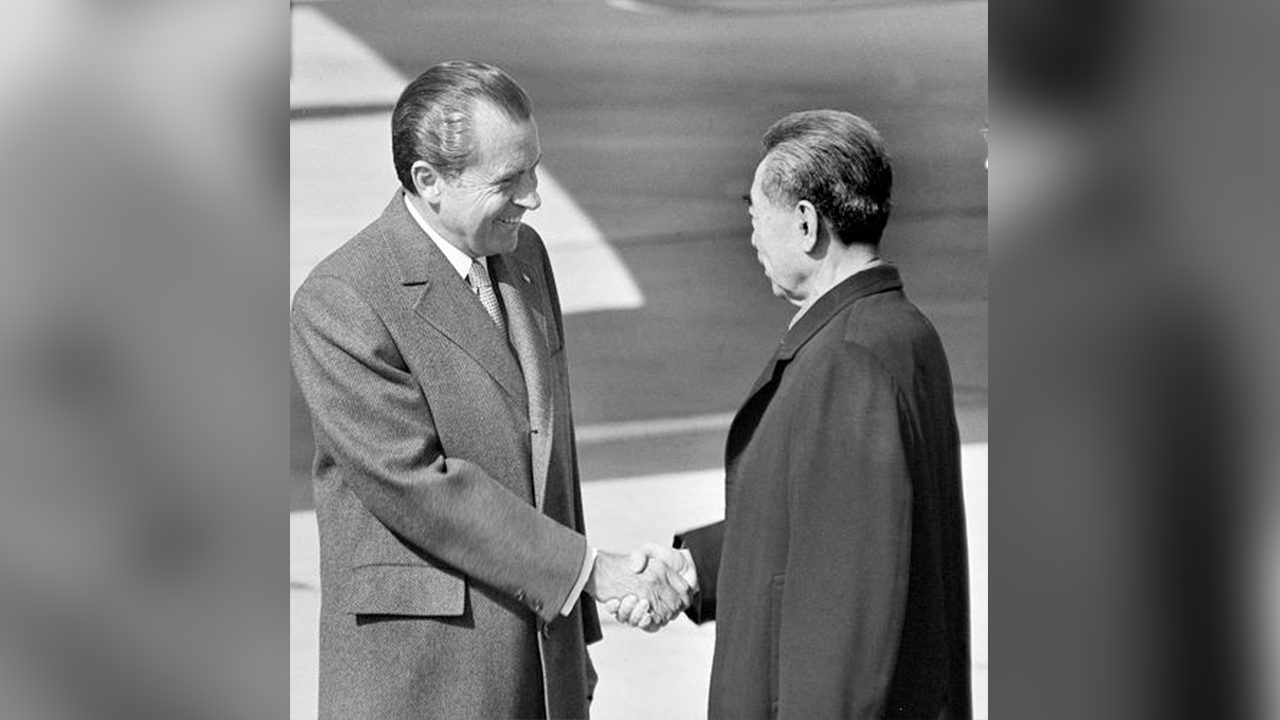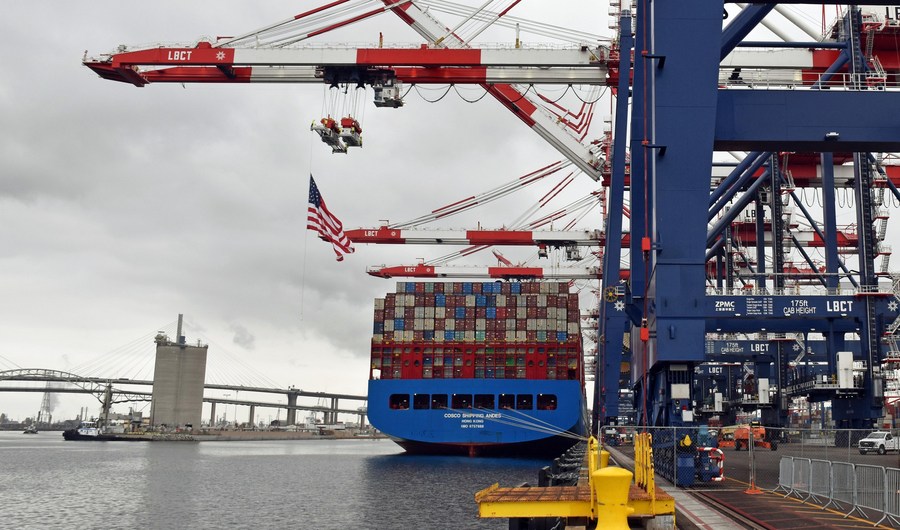
File: Chinese Premier Zhou Enlai (R) and U.S. President Richard Nixon shake hands at an airport in Beijing, China, February 21, 1972. /Xinhua
File: Chinese Premier Zhou Enlai (R) and U.S. President Richard Nixon shake hands at an airport in Beijing, China, February 21, 1972. /Xinhua
Editor's note: Sun Chenghao is a research fellow at Center for International Security and Strategy, Tsinghua University. The article reflects the author's opinions and not necessarily those of CGTN.
February 21 marks the 50th anniversary of former U.S. President Richard Nixon's visit to China. Since Nixon's visit half a century ago that led to a handshake across the vast Pacific Ocean, the two countries have gradually come together based on common strategic needs, regardless of differences in ideology, and opened a new chapter of bilateral relations in the history.
Fifty years later, the relationship between China and the U.S. has changed in ways that is beyond each country's expectation. The Biden administration has continued to perceive China as a "strategic competitor," following the footsteps of his predecessor, Donald Trump.
Meanwhile, U.S. President Joe Biden has continued the strategy of the Obama administration, hoping to create a strategic environment to constrain China by uniting allies and setting rules. This can be seen in the latest Indo-Pacific Strategy recently released by the U.S. government.
There is no denying that China-U.S. relations are facing unprecedented challenges. Standing at this crucial historical juncture, it is more important for the two countries to learn from the history of exchanges over the past five decades, and apply their experience to the policy planning of managing bilateral relations.
First, despite ups and downs, China-U.S. relations have always moved forward steadily. Neither a hot war nor a cold war broke out between the two since 1972. China and the U.S. have also gained valuable experience in dealing with issues through active interactions, including attaching great importance to bilateral relationship by placing it at the top of the overall diplomatic agenda, accommodating each other's vital interests and respecting each other in the political field.
Second, the interests between China and the U.S. are deeply intertwined, and decoupling is unrealistic. Over the past 50 years, the two countries have maintained close exchanges in trade, finance, culture and other fields, which forms the solid foundation for the stability of bilateral relations.

A container ship of China's COSCO Shipping docks at a new container terminal of the Port of Long Beach in California, U.S., August 20, 2021. /Xinhua
A container ship of China's COSCO Shipping docks at a new container terminal of the Port of Long Beach in California, U.S., August 20, 2021. /Xinhua
For example, in the economic and trade section, China-U.S. trade volume has continued to rise despite the impact of the COVID-19 pandemic. In the financial sector, the China hardliners in the U.S. advocate tighter financial sanctions and further capital decoupling, but U.S. enterprises still regard the opening of Chinese finance as the most significant external opportunity.
Third, China and the U.S. share common understanding on managing risks and crises, which has contributed to the steady and sustained development of bilateral relations. The two countries have treasured all sorts of dialogues in the face of crises in order to reduce mutual suspicion and miscalculation.
At the same time, the coordination on risk management has gone beyond the bilateral level and successfully helped the world deal with terrorism, financial crisis and other major international risks.
Although China-U.S. relations have become grimmer and more complex than that in the past, people should not lose confidence in the future. Stable bilateral relations can still be expected.
After putting forward the "competition, cooperation and confrontation" to define its China policy, the U.S. side has also raised the concept of seeking no decoupling, no change to China's system and no confrontation between the two sides, which is equivalent to delivering a certain degree of reassurance to China at the economic, political and strategic levels.
China and the U.S. still have common interests and need for cooperation. Trade between the two sides soared by 28.7 percent and amounted to $755.6 billion in 2021 – maintaining a strong growth momentum and contributing 12 percent to China's record $6 trillion foreign trade for the year. The bilateral economic and trade relations will continue to play a stabilizing role in the future.
In addition, the two countries share common ground on tackling global issues such as COVID-19, climate change, energy security and nuclear non-proliferation. Cooperation should be deepened in these areas to gradually narrow the competition between the two countries.
Most importantly, unlike the Cold War era, third party actors are stronger as forces for peace today. The Biden administration's attempt to hedge China is not welcome by regional countries. As economic globalization has made the world industrial chain closely linked, no country is willing to risk taking sides between China and the U.S., or to engage in the great power competition which makes them a tool of the U.S. strategic rivalry. This will, to a large extent, shape the future direction of China-U.S. relations.
(If you want to contribute and have specific expertise, please contact us at opinions@cgtn.com.)

